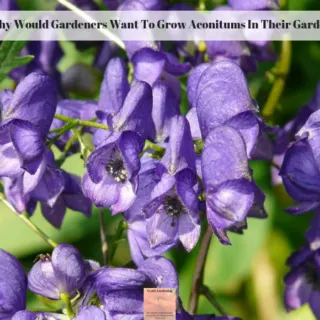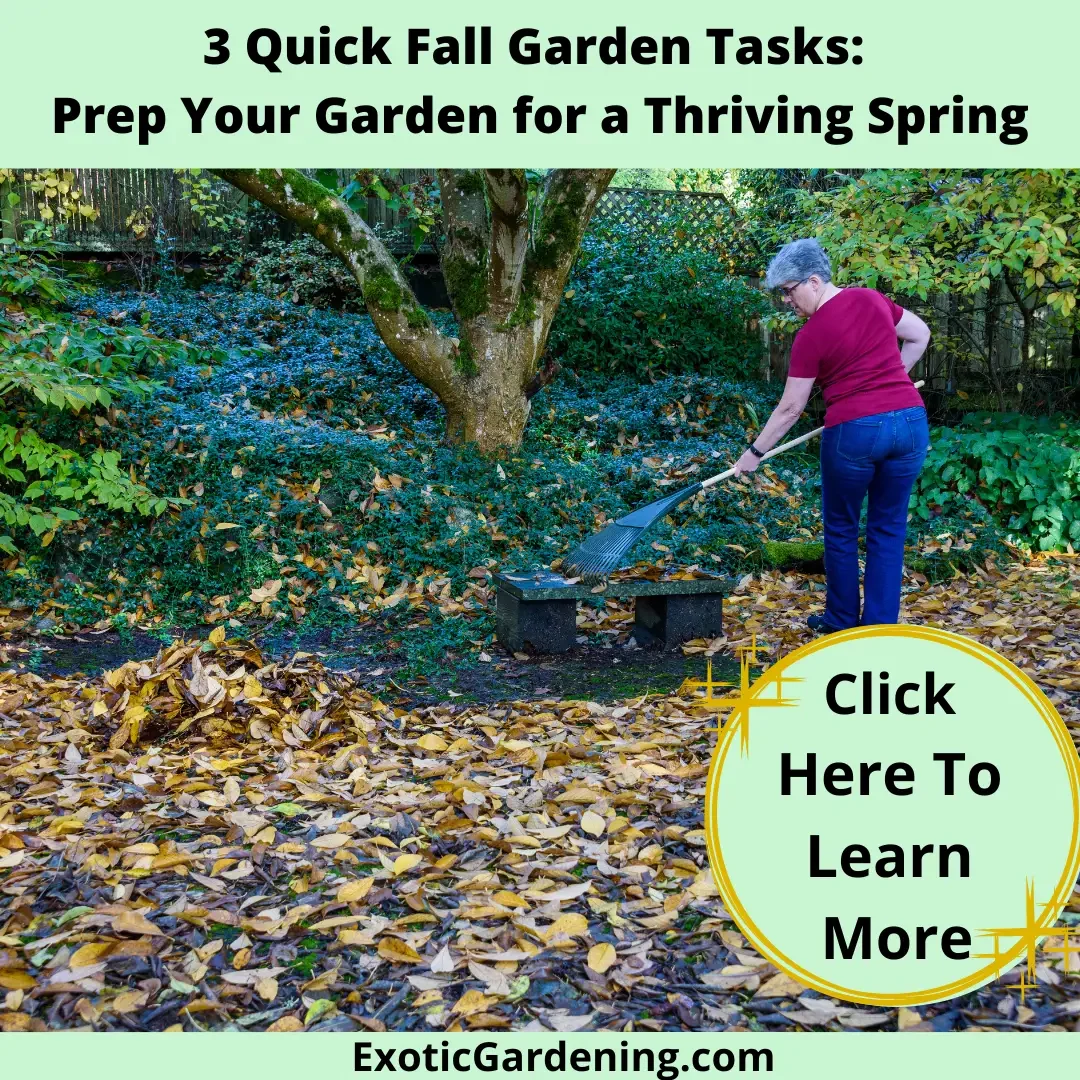Embracing the art of growing fall vegetables is a delightful journey, especially if you're a passionate backyard vegetable grower like me, proudly hailing from Indiana.
As the temperatures begin their gentle descent, a magical window of opportunity opens, allowing you to extend your growing season and relish a bountiful harvest even as winter's chill approaches.
In this comprehensive guide, I'm excited to share invaluable insights and practical wisdom on cultivating fall vegetables that will thrive in your garden.
With the backdrop of Indiana's beautiful landscape and its unique climate, we'll explore the secrets to success in nurturing these cool-weather crops.
Whether you're a seasoned gardener or just starting out, this guide is tailored to help you make the most of your garden during the autumn months.
Together, we'll unlock the possibilities, bringing fresh, homegrown produce to your table throughout the fall season.
So, let's dig in, quite literally, and embark on this wonderful journey of cultivating fall vegetables.
There's More to Love About October than Halloween
As we embrace the arrival of October, there's something more to be excited about than just Halloween.
It's the perfect time for growing fall vegetables right here in Indiana.
Whether you're planting new crops or extending the growing season for those summer-planted favorites like tomatoes, this season offers a treasure trove of possibilities.
I've been doing this for a while, and it's not only a fantastic way to save money on your grocery bill but also to enjoy fresh produce year-round.
Fall and winter seasons are often easier for growing cool-weather crops.
One reason for this is that there are fewer pests to contend with.
It's like nature's way of giving us a break.
The secret to success lies in planting these crops late in the summer or early in the fall, so they're well-established before the first hard freeze arrives.
And keeping them alive through the winter season isn't as daunting as it might seem.
Protecting Your Fall Bounty
Indiana's weather can be unpredictable, and fall gardening often throws us a few curveballs.
To make sure your fall garden thrives, here are some tips that have saved my crops from unexpected chills:
- Mulch: A generous layer of mulch is like a warm blanket for your plants. It helps keep soil temperature stable and protects roots from frost. Your carrots and potatoes will thank you.
- Row Covers: Row covers or frost blankets are your best friends when frost threatens your greens. They're like a magic shield against the cold.
- Cold Frames: If you're serious about extending your growing season, consider investing in a cold frame. It's like a cozy little greenhouse for your plants.
- Watering: Don't forget to water regularly, especially during dry spells. Well-hydrated plants are better equipped to handle temperature fluctuations.
- Harvest Timing: Keep an eye on the weather forecast and consider harvesting just before frost. Some vegetables, like tomatoes, can continue ripening indoors.
- Companion Planting: Experiment with companion planting. Some plants can protect each other from pests and provide extra insulation. It's like having a buddy system in your garden.
A Recipe for Keeping Your Fall Vegetables Alive
Keeping frost at bay is half the battle when it comes to preserving your fall garden.
The key to success is using a combination of frost cover and 6 mil. plastic.
You may have heard of fancy hoop houses, but you can craft your own small hoop houses with metal or plastic conduit or even repurpose tomato cages.
It doesn't take much to protect your plants from the chilly embrace of frost.
Simply covering them with a trusty row cover does wonders, depending on how cold it gets and how severe the frost is.
Take last night as an example – we had a killing frost here in my Indiana garden.
Unfortunately, the vegetable plants in the open garden, with the exception of carrots, kale, and peas, didn't make it.
However, the plants under the row cover and 6 mil. plastic were perfectly fine, even the tomatoes.
My approach usually begins with the row cover.
It serves a dual purpose – it keeps pests at bay and protects the plants from light frosts.
When nighttime temperatures start falling below 50 degrees, I add the 6 mil. plastic.
It's just regular clear plastic, the kind I use on my house windows during the winter months – be sure it's 6 mil.
I do make sure to vent the plastic during the day to keep the temperature inside from getting too high.
Once daytime temperatures dip into the 40s, I stop venting the plastic.
But I must admit, I don't vent my homemade hoop houses, especially since I want to keep some warm-weather crops alive as well.
It's crucial not to rush covering certain plants too early in the season.
Kale, Brussels sprouts, and Jerusalem artichokes are some examples.
I also leave my potatoes in the open garden and often don't plant them until sometime between the last week of November and the last week of December.
Gardening Tips for Fall and Winter Delights
Did you know that some vegetables taste even better after being kissed by a few light frosts?
It's true!
Plants such as Jerusalem artichokes (sunchokes), Brussels sprouts, and kale seem to develop a sweeter, more complex flavor.
Plus, winter-grown radish and lettuce are much more tender than those grown during the regular growing season.
And guess what?
Those tomato plants and their fruits survived just fine under the plastic cover and row cover.
In fact, I was able to harvest a basket full of tomatoes, and they were still firm.
The most important lesson I've learned about keeping tomatoes alive under cover is to ensure that both the row cover and the plastic are secure to the ground.
A little dirt over the edges of the plastic can help with this.
When daytime temperatures hit 50 degrees, I tend to leave my hoop houses closed day and night.
A Tip for Tomato Lovers
If you're a tomato enthusiast like me, here's a handy trick.
Choose varieties that can handle cooler temperatures, like Siberian tomatoes.
Don't be afraid to experiment.
I've found that cherry tomatoes tend to be more cold-hardy than some of the larger types.
Once you discover a tomato that thrives in cool conditions, save those seeds.
Plants adapt to their environment over time, so your tomatoes will become more and more resilient in the cool season.
The key is to keep saving seeds, replanting them the following year, and repeating the process.
It might take a few years, but eventually, you'll have the perfect cool-season tomato.
In Addition to Tomatoes
Apart from tomatoes, I also harvested radishes.
The watermelon radish and the black Spanish radish are two varieties that perform exceptionally well for me.
There were young carrots and lettuce in the garden, almost ready for harvest.
Speaking of carrots, I have a soft spot for the purple varieties.
The kale was thriving, along with some cabbages, radish pods, and Japanese red mustard growing under cover.
A quick note about Japanese red mustard – it's a prolific self-seeder.
I don't mind it in my garden, but if you prefer neat and tidy, you might want to limit its spread.
Lettuce, Spinach, and Radish: Embracing the Cool Breeze
Lettuce and spinach are like old friends who never let you down.
They absolutely thrive in the crisp autumn air.
I've found that a little protection, like a cozy cold frame or a trusty row cover, can keep lettuce producing beautiful, tender leaves for most of the winter.
There's something truly delightful about snipping fresh greens for a salad even as the leaves start to change color.
And then there's radish, the speedy superhero of the vegetable garden, the radish.
In just a few weeks, you can be munching on these peppery delights.
Plant them in late summer or early fall, and you'll have a tasty addition to your salads and snacks before you know it.
Turnips and Carrots: Rooted in Fall
Turnips and carrots are like the dynamic duo of the fall garden.
The cool weather enhances their flavors, making them sweeter and more delicious than ever.
Turnips not only give you crunchy roots but also nutritious greens.
Sautéed with a bit of garlic and olive oil, they're an absolute treat.
As for carrots, don't be in a rush to pull them out after the first frost.
That cold weather actually works wonders for their taste and texture.
Plus if you cover your carrot patch with bales of straw or use a cold frame you can actually harvest the carrots throughout the winter.
The key is to make sure the ground does not freeze where the carrots are planted.
Potatoes: A Thanksgiving Tradition
Thanksgiving is a time of gratitude, and one thing I'm always thankful for is a good crop of potatoes.
Just like me, you plant them right after Thanksgiving and patiently wait until late May or early June for your harvest.
The trick is to double dig a trench before the ground freezes.
Layer the bottom of the trench with 12 inches of dried leaves, dried grass clippings, or if you have goats, you can remove the straw from their stall and use it.
I like to use a mix of all of the above.
Then I plant my pre-sprouted potatoes and cover them with another layer of dried materials making sure I cannot see any of the potatoes or sprouts.
Over that I sprinkle enough dirt to cover everything and create a two inch layer of soil.
If you are in a cold climate - or expect a cold winter, feel free to lay a sheet of 6 mil. clear plastic on top of the hole - not in it - and cover the edges with dirt to hold it in place.
Watch your potatoes come spring and when they start to grow, remove the plastic if you used it and start backfilling the hole with the dirt you removed.
There's something about digging up those spuds early in the gardening season.
If you plan to overwinter potatoes in the ground that are ready to be dug, be sure to use straw bales or a cold frame.
Just like with carrots, the key is to insulate the ground where they are growing well so it does not freeze.
Onions: Fall's Aromatic Charm
Onions are a must in my fall garden.
These aromatic bulbs love the cool weather, and you can plant them in late summer or early fall.
As they grow, you can enjoy fresh green onions, and if you let them mature, you'll have a storage crop that lasts well into winter.
Plus, the scent of freshly harvested onions is simply one of the little joys of fall gardening - and they are great companion plants!
Adding Some Exotic Flair to Your Fall Garden
While the classics are fantastic, it's always exciting to add a dash of the exotic to your garden.
Here are some suggestions to spark your adventurous gardening spirit:
1. Chinese Cabbage: Picture Napa cabbage – it's a fantastic choice for a fall garden. Plant it in late summer, and you'll be impressed by its crisp, mild flavor. Great for stir-fries, salads, and even homemade kimchi.
2. Kohlrabi: This unique-looking vegetable has the taste of broccoli stems and radishes. Roasted with olive oil and your favorite seasonings, it's a treat. Plant it in late summer for a late fall or early winter harvest.
3. Swiss Chard: Not exactly exotic, but the colorful varieties can add vibrancy to your garden. Perfect for soups, omelets, or simply sautéed with garlic. And it's a stunner in the garden too.
4. Mizuna: A Japanese green with a mild, peppery flavor. Great for salads and stir-fries. Plant it in late summer for a fall harvest.
5. Jerusalem Artichoke: A lesser-known gem, Jerusalem artichokes produce tubers with a unique water chestnut-like taste. They're quite prolific, so be prepared!
More Gardening Tips for Winter Delights
Growing vegetables year-round isn't rocket science.
Anyone can do it with a simple cold frame and by choosing the right vegetables.
While it's true that tomatoes, peppers, and other warm-season plants won't make it until spring in an unheated hoop house or cold frame, they will survive several more months, allowing you to continue harvesting fresh produce from your own garden.
No need to pay the high prices at the grocery stores.
The cool-season crops won't have any problems at all making it through the winter, as long as you keep the soil moist and the plants protected with both row cover and plastic, even here in USDA hardiness zones ⅚.
So, as we embark on this beautiful journey through October and into the fall and winter seasons, remember that your garden can be a constant source of fresh, delightful produce.
The Fall Garden
Fall Pruning Secrets: Trimming for Healthier Plants
Discover Fall Pruning Secrets: Learn when and how to prune for healthier plants in our expert guide. Your garden will thank you!
Rainy Days and Your Garden: Managing Watering in the Fall
Discover the art of managing watering in the fall. Tips to prevent overwatering and keep your garden thriving on rainy days.
The Art of Mulching: Protecting Your Plants from Autumn Chill
Discover the secrets of expert mulching in fall. Learn how to protect your plants from the autumn chill with our essential mulching guide.
Crafting Miniature Gardens for Halloween - A Vintage Halloween Tale
Craft Vintage-Inspired Miniature Gardens for Halloween - Spooky Terrariums with Plants and Halloween Decor.
Halloween Horticulture: Plants with Magical Properties for Halloween
Unlock the enchanting world of Halloween with plants with magical properties. Discover their mystical allure in our captivating guide.
Growing Exotic Pumpkin Varieties for a Magical Fall Garden
Discover the allure of exotic pumpkin varieties in your garden for a magical fall. Spice up your harvest with diversity!
Creating a Spooky Halloween Garden: Unveiling Nature's Eerie Allies
Transform your garden into a spooky Halloween haven with eerie insects, enchanting decor, and the magic of nature. Explore now!
Monkshood Flowers for the Fall: A Majestic and Toxic Beauty
There are some late blooming flowers for the fall season such as monkshood. Autumn monkshood is known to bloom from September to November!
Sweet Autumn Clematis: A Garden Treasure
Discover the enchantment of Sweet Autumn Clematis: rapid growth, fragrant blooms, and versatile garden beauty await!
3 Quick Fall Garden Tasks To Do Now
Master your garden's fall cleanup with these 3 essential fall garden tasks. Save time and stress less this season!





























